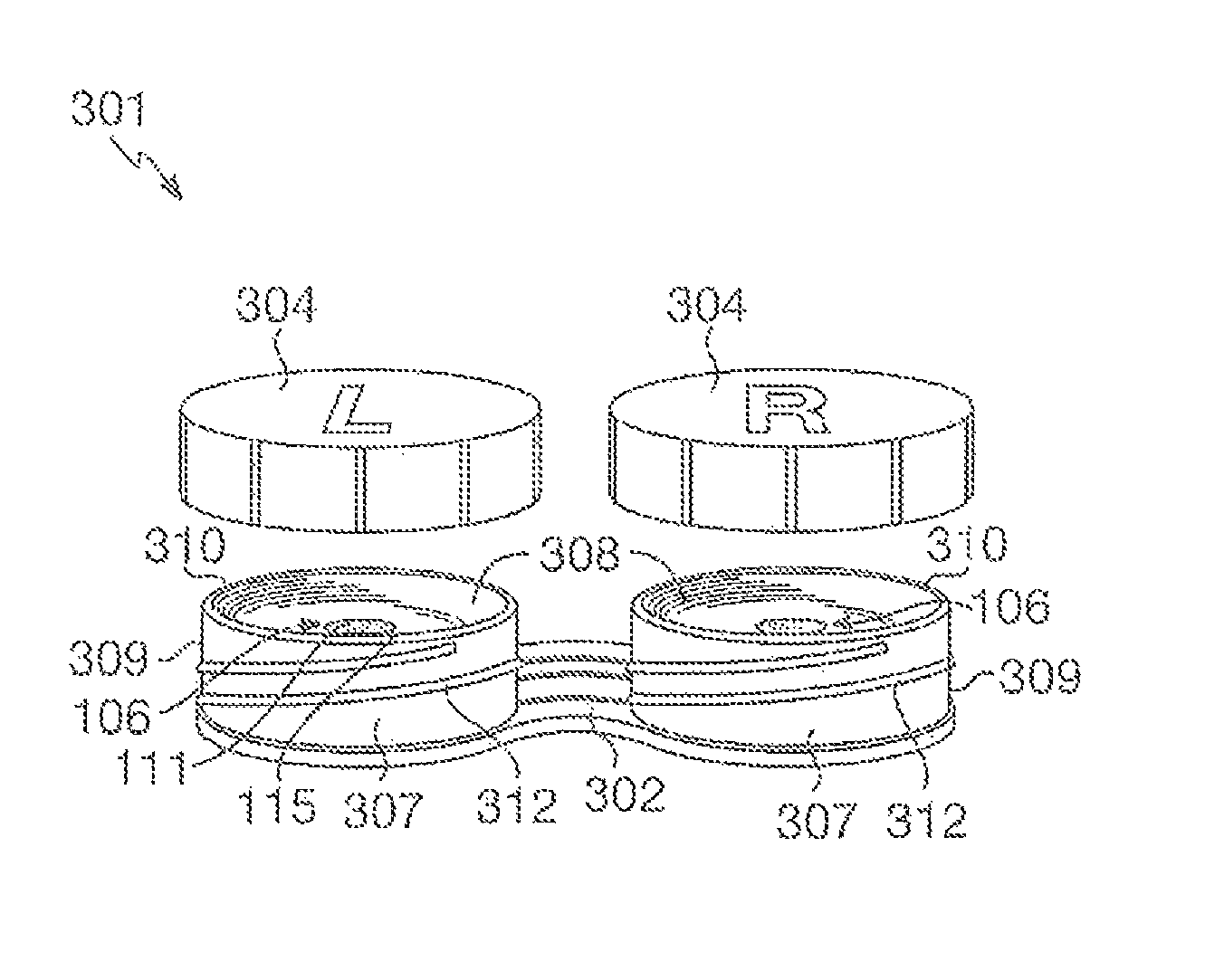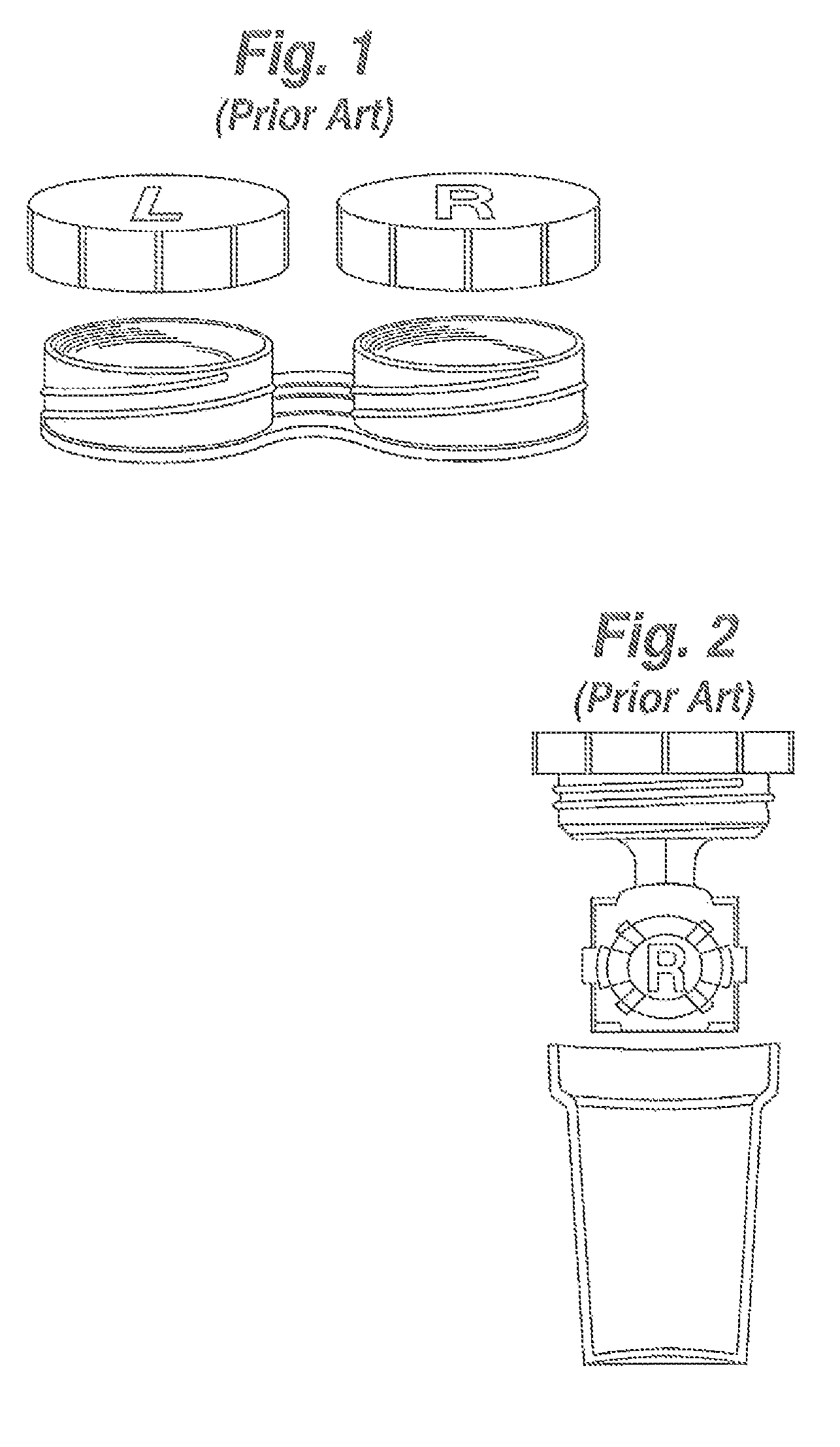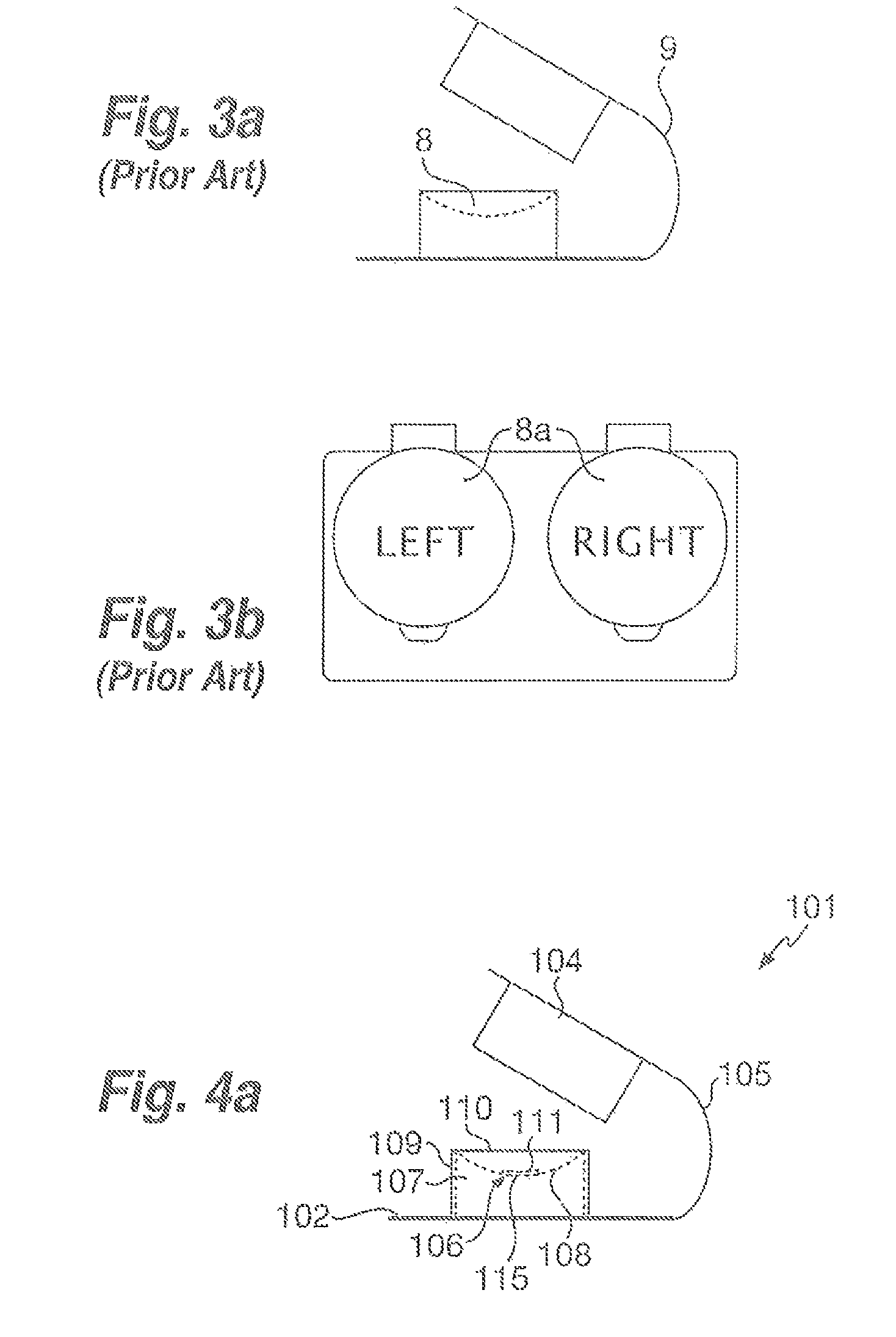Some of the disadvantages of the hard PMMA lenses were: 1) that no
oxygen was transmitted through the lens to the
conjunctiva and
cornea, which could result in a number of adverse clinical effects; and 2) the long period of
adaptation required before a comfort level for the user wearing the lens was achieved.
However, despite their hydrophilicity, softness and flexibility, soft contact lenses still had the potential to have deleterious effects on the eye due to the possible interaction of microbes and toxic materials with the hydrophilic materials which comprised the lenses.
Despite improvements in soft contact lenses over the last twenty-five (25) years, there remain a number of issues that impede soft contact lenses from achieving widespread acceptance, the most paramount being the possibility of lens
contamination with pathogenic microorganisms.
While effective as a
disinfectant, the heating process had numerous negative side effects, often resulting in the proteins from the tear film of the lens (which were absorbed into the lenses) being denatured (or deactivated).
Often, these
protein residues could not be removed from the lenses.
In addition, heat disinfection was destructive to some variations of soft contact
lens materials.
Due to the negative side effects associated with the heat disinfection method, it rapidly became apparent that some
alternative process for disinfection was required.
However, the
hydrogen peroxide-based disinfection systems, while overcoming some of the negative side effects associated with heat disinfection, also had some major disadvantages associated with their utilization.
These systems were complex, expensive and open to user misuse, with users frequently failing to remember to neutralize the lenses with
saline prior to
insertion, resulting in significant ocular discomfort following reinsertion.
However, uptake of these mercurial compounds or low molecular weight bisbiguanide antiseptics into the hydrogel materials were high and their subsequent release onto the
ocular surface resulted in high numbers of allergic complications for soft contact lens users.
Over the past twenty (20) years, it has become increasingly obvious to those of ordinary skill in the contact lens field, that the
contact lens case is a major source for the
microbial contamination of contact lenses, which results in serious corneal infection.
Even though many users realize the need to dispose of lenses after the recommended use period, many users do not realize that contact lens storage cases also have a limited period of safe and innocuous use.
Generally, this is because the
contact lens case often harbors a
glycocalyx or “
biofilm” that shelters microbes from the surrounding solution and prevents their adequate disinfection.
Biofilms develop in contact lens cases from the absence of appropriate case cleaning, infrequent changing of solution, and / or structural breakdown of the case surface.
While the introduction of multipurpose disinfection solutions has helped to alleviate some of the problems historically associated with inadequate cleaning of
both lenses and cases, failure of a user to strictly comply with recommended disinfecting and cleansing techniques is still quite common.
Solution and case manufacturers and the optometrists and other professionals who prescribe the contact lenses and the proper disinfecting, care and cleansing regime have no control over case “misuse” by contact lens users.
Misuse by users includes, but is not limited to, users keeping cases too long, reusing solutions designed for only one-time usage,
topping-off old solution in the case with new solution, and inadequate cleaning and hygienic maintenance of the cases.
All of these instances of misuse by users have been linked to microbial keratisis, one of the most significant complications of contact lens wear which has potentially devastating effects on the eye, including severe vision loss.
While attempts have been made to create contact lens cases that encourage compliant lens and case care regimens, these contact lens cases only employ
passive control mechanisms that remind a user to empty solution, not to top-off, to adequately clean the case and to throw away the case at the end of its useable life.
However, a user has often already been informed of the correct lens and case care regime by their
eye care professional and still often chooses to ignore that advice.
The problem in contact lens and case care is not a lack of information; rather, it is the human urge to obtain more
usable life out of cases and solutions to
cut costs or, simply, apathy towards proper lens care.
These problems will generally not be overcome by passive reminders.
Notably, none of these conventional contact lens cases currently provides such an
active control mechanism, preventing a user from continuing to use a case after its safe and sterile lifetime and practicing the deleterious habits of reusing solution,
topping-off old solution, and inadequate cleaning.
While each of these practices might conserve a user's
eye care expenses, each of these practices are counterproductive to safe, comfortable and proper lens care.
Warnings of the potential deleterious effects of improper care and education on proper disinfection and cleansing methodologies are simply not enough to impede this practice of
cutting corners that is all too common among contact lens users.
 Login to View More
Login to View More 


